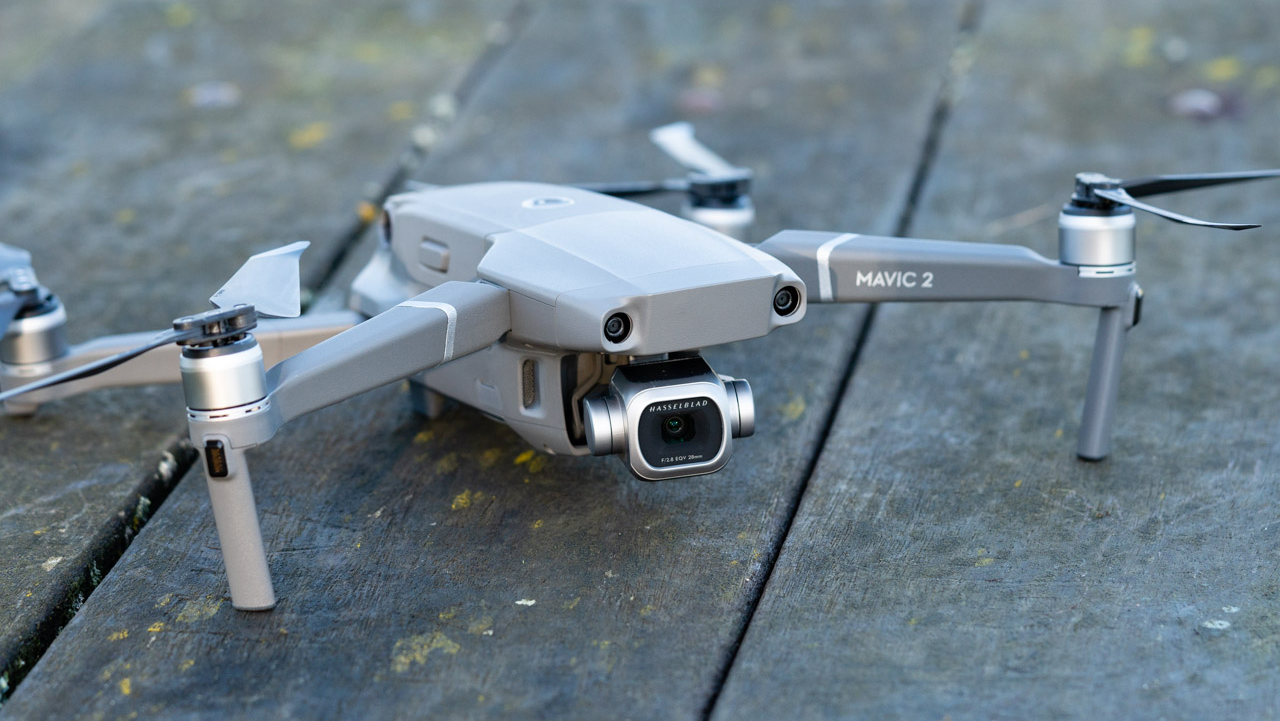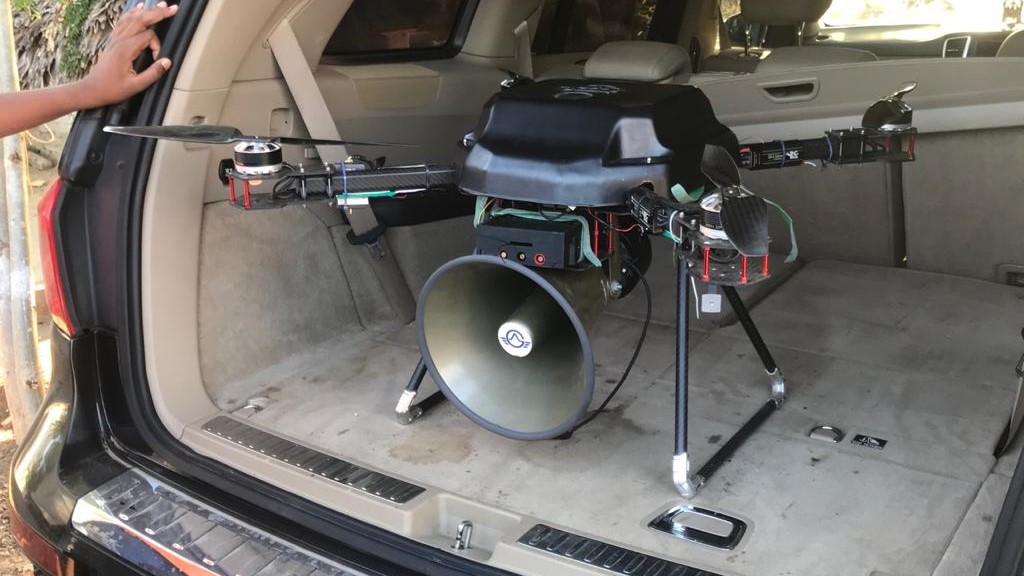How India’s drone startups plan on fighting emergencies remotely
Can drones be our front line heroes during a crisis?

Drones are one of the hottest pieces of upcoming consumer tech. The ability to experience flight and explore the surroundings from the comfort of your backyard has a clear appeal. However, these tiny flying robots also have a lot of non-recreational purposes — some of which can even help in emergencies.
India has only recently begun warming up to the idea of unmanned aerial vehicles (UAVs). This slower adoption is understandable considering the privacy and safety questions that arise. While enthusiasts are yet to find luck with them, the ongoing Covid-19 pandemic might just be the catalyst that drones needed in India.
Drone primarily refers to an unmanned aerial vehicle. They come in small packages and can be controlled via a smartphone or a dedicated drone controller. They are becoming a serious business in India and startups from in the country are at the forefront in adopting latest technology.
Drones can be used in several scenarios. Beyond the obvious recreational purposes, they can be used to deliver essentials, medical equipment, and for a variety of uses in the current pandemic. They can be used for public surveillance, announcements, spot situation analysis, monitoring, etc.
In fact, it is in the lockdown timeframe that we saw the first wave of surveillance and monitoring come into action. Here’s how Indian startups are planning to use drones in emergency situations, and what we can expect from them in the future.
Why drones during an emergency?
Drones require minimal human interaction. A pilot can navigate the UAV to different locations and complete the task while staying safe and being miles away from the red zones.
In certain emergency situations such as a natural disaster or the lockdown, drones can be life savers. They can provide rapid awareness, help firefighters locate the hot spot during fire hazard, can be utilised in military operations, in transportation of organs, public surveillance, delivery of essentials and medicines. And, all of this can be achieved without any need for human contact, further reducing risk of life.
Get daily insight, inspiration and deals in your inbox
Sign up for breaking news, reviews, opinion, top tech deals, and more.
Why haven’t drones become mainstream in India?
Regulations around drones in India are a grey area. There are multiple overlapping laws, with more in the pipeline. This makes the ownership of drones a pretty complicated affair. According to the latest Civil Aviation Requirement drone policy, pilots in India need to get a NOC from a web portal for undertaking aerial survey with the final permission of DGCA.
All drones in the country must be registered on this portal. Information such as the drone’s dimensions and weight, owner’s Aadhar card and other essentials are recorded. A unique “digital number plate” will be created to track the drone in case of a mishap.
Legalities aside, there are also various other factors hindering the adoption of drones. Firstly, serviceable drones are not affordable. Anything with decent range and a reliable camera burns a very large hole in the pocket. And the more capable they get, the more cost prohibitive it becomes. There are very few authorised drone retailers in India who keep driving up the prices for the imported units.
Pleasantly surprised to see even India's no-fly zones accurately marked on DJI's mapNo registration (with DJI) or positioned in one of these aerodomes does not let the drone fly#MavicMini pic.twitter.com/7H4KIC6ZzeNovember 27, 2019
Thankfully, even drone operators take responsibility by making use of geo-fencing and marking areas where a person can fly them. In certain areas that are in close proximity to airports or near defence areas, drones are restricted.
Once you manage to get your hands on a drone, there aren’t many educational institutes available in the country which can teach how to optimise their use for professional purposes.
One of the other prime reasons why remote operations of drones haven’t taken off are the laws around BVLOS operations. BVLOS stands for Beyond Visual Line of Sight. It means, the drones fly beyond the visual line of sight of the operator. According to the latest Draft Policy 2.0, Civil Aviation Regulations 2.0 (CAR 2.0) may allow operations of beyond the current limit of 400 ft.
BVLOS basically pertains to pilots being allowed to control drones remotely even if they can’t actively see it via advanced GPS, location tracking, and smart controls. Many nations around the world are amending its drone policies so that they can be allowed to fly drones beyond the visual line of sight to attain maximum efficiency in operations. BVLOS will enable unmanned aerial vehicles (UAVs) to fly beyond and cover more distance.
In emergency situations, it is not practical to be able to operate drones in the areas that need to be addressed. Such scenarios highlight the importance of BVLOS. Of course, it comes with its own set of challenges like misuse of drones, breach of privacy and security. Although it is always safe to fly drones around you, in certain cases, you will have to fly it beyond your visual line of sight, thus making it a sort of double-edged sword.
Startups to take the first flight
There are a couple of prominent drone startups in India working with the government to create technology for the larger welfare of humanity.
Alternative Global is one of them and will soon begin its trails. As of now, it is doing some groundwork. As a next step, HIRM (Hazard Identification and Risk Mitigation) workshop will be conducted and the flight trials will begin 15 days thereafter. This workshop is done in order to brief the authorities on how the trials would happen and the safety briefings around the trials.
Talking about the usage of drones for disinfection, Mr Ankit Kumar, Founder, Alternative Global said, “globally, many countries are using drones for disinfection purposes and drones have found multiple use cases such as thermal scanning to identify hotspots, potential coronavirus case, disinfection by the spraying of sanitiser and public announcement for spreading the awareness. Drones as of now are not permitted for autonomous flying but with BVLOS in the future, autonomous flying will be possible which will be of great importance for medical delivery.”
He also revealed that the company is working on conducting 100 hours of trials, post which, numerous trials around BVLOS would be initiated, some with the central government and others with the state governments in different use cases. After the trials, they are expecting a full-scale commercial roll-out operation during the mid of 2021 once CAR 2.0 is released and the regulation is clear to proceed.
Another startup, Droneman is already live in Mysore and is planning to expand to Mangalore and Mumbai pretty soon. Though the company is not delivering any essentials with the help of drones, they will make it live in the near future.
In Mysore, they are working to support the local administration for monitoring and making public announcements. It has been involved in movement surveillance to ensure social distancing besides working very closely with health departments in disseminating information through announcements.
The current situation
The Directorate General of Civil Aviation (DGCA), the apex body monitoring Indian air space, had sought applications from companies to participate in sandboxes for BVLOS and test out its drones. It received 34 applications but rejected 27 of them as they lacked complete information.
The seven shortlisted companies were - Swiggy, Zomato, Dunzo, Tata Advanced Systems, Honeywell, Zipline, and Rewarding. The committee also asked them to provide additional technical details regarding the BVLOS.
These seven companies will be conducting drone tests, followed by several rounds of consultations. And, this is the reason we might not see drones delivering essential services or packages any time soon in India.
Kumar explained why BVLOS is the need of the hour and is more practical, “BVLOS opens up a huge opportunity for the industry to adopt drones for multiple applications such as surveying, inspection, delivery, transportation etc. Today with VLOS, only a minor level of inspection and surveying activity is possible as a result of which there is limited industry participation. There are multiple practical options which are going towards commercialisation such as delivery and wide-scale deployment of drones for security and monitoring.”

To make this a reality, a lot of things need to come together - Airworthiness standards in Drone 2.0 policy, India-specific hardware standards and Bimodal control that allows air traffic to take control of the drone in BVLOS flight.
To achieve Bimodal control each drone must have adequate communication and navigation software and hardware that allows for data exchange with UTM (Unmanned Aircraft System Traffic Management). Also, the drones must allow for operational command to be transferred to UTM at any time during the flight time.
There is no doubt that drones would play a major role as it reduces direct human interface in several operations, ranging from surveillance, delivery to espionage. It can be used in the regions where the safety of the front-line workers might be compromised. Many countries around the world are already using drones to battle the Covid-19 pandemic. Drones are being used to make announcements, delivery, and enforce the lockdown.
Modifying the drones
Drones need to be modified before using them in emergencies. However, a key issue is that the existing drones have major range constraints, and any retrofits can hurt its flying capabilities. Droneman is working with manufacturers to custom build multi-purpose drones ready to assist the authorities. They are using the technology to conduct the required modifications and customisation based on the need of the hour whether the need is fitting of a speaker, camera or a thermal scanner.
Although you need a specific drone to have a thermal scanner, Droneman is working on it currently and aims to bring it soon.
“Thermal monitoring needs a specific drone, we are working on it.” Droneman aims to be the single platform for all things drone and drone pilots, and hopes to be the go-to platform to help the government and police officials across the country in difficult times like these, and also be the extended force to help the government in any way possible, be it deliveries, monitoring, thermal imagining, flood relief management and more”, said, Aditya Kothari, Co-founder and CEO of Plixr Technologies, who is spearheading the drone initiative within Startup Vs Covid-19 initiative.
“We have successfully implemented solutions in Mysore and Mumbai so far. We are soon planning to move to Mangalore. We have been talking to various state and central governments to partner and help them out in various ways using drones. Based on the requirement we are open to expanding to more geographies”
Droneman is planning to use drones to disinfect during emergencies. As this method would have zero human intervention can cover large swathes of land, making it cost-effective. Recently, Chennai based Garuda Aerospace did something similar in Bhubaneshwar, Odisha, to sanitise usually crowded areas such as markets or public places.
In the coming months, the area of services will be focused on public surveillance and announcements, delivery of payload including medicines and essentials, body temperature mapping, and spot situation analysis and monitoring.
Looking forward
There is definitely a lot of work to be done before drones become a big part of our disaster management efforts. The current situation has really helped highlight the impact that drones can have.
The DGCA is currently working on creating a more robust framework for drones as well as pilots to create a system where they can be easily and effectively deployed if need arises. These will fall under the CAR 2.0 set of regulations. The proposal may include the following terms:
- BVLOS operations - operating beyond the current 400ft limit
- Autonomous operations - use of algorithms for flying with safety, security and privacy principle
- Drone corridor - A dedicated airspace for drones
- Airworthiness - new principles that include safety, security, and privacy by design
- UAS Traffic Management - A USA traffic management should be responsible for managing UAS induced traffic in drone corridor
- DigitalSky Service Providers(DSP) - enable services to the UAS operators, DigitalSky Platform, relevant law enforcement authorities and/or any other stakeholders.
- Pilot training - advanced and improved training to meet professional requirements
- Droneports - designated areas to facilitate take-off and landing
- Payload - commercial operations to deliver packages and essentials
- Make In India - 100% FDI to boosting the initiative
- Insurance - professional liability insurance to cover the cost of legal fees and damages awarded against such operators
The Covid-19 crisis proved how instrumental tech can be during emergencies. Creating stronger channels to harness them better should be a priority going forward.
Srivatsa is a prolific writer who spearheads the core writing team on tech news, buying guides, reviews, and all gadget articles. He is passionate about technology.
